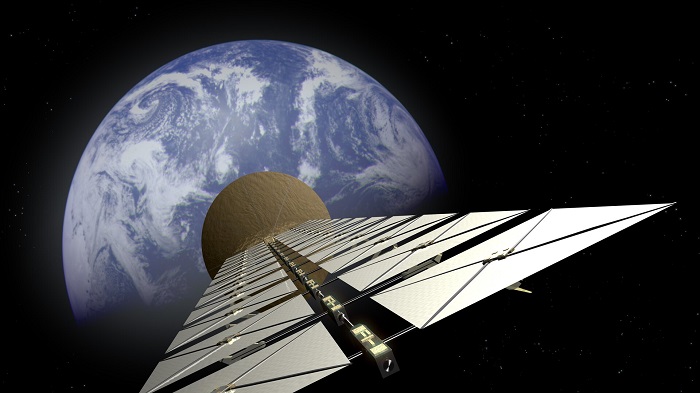ISABEL RUBIO ARROYO | Tungsteno
While some researchers suggest using skyscraper lifts to save and generate energy, others are looking at ways to do it using snow, microalgae or by equipping cruise ships with photovoltaic sails. Another alternative that has been in the spotlight for years is solar space farms. What are the technical and economic obstacles to this energy utopia?
The quest for uninterruptible solar power
The idea behind space solar power is simple and appealing: harness solar energy in space, where it is continuously available regardless of local weather or darkness. This energy would be collected on satellites orbiting the Earth and then transmitted wirelessly to collection points on the surface. "The concept complements rather than competes with terrestrial renewables, because Space-Based Solar Power can make power available reliably on an ongoing 24/7 basis," says the European Space Agency (ESA).
ESA has signed contracts for two conceptual studies of space-based solar power plants on a commercial scale. "We are really starting from a blank sheet of paper to get an up-to-date design for what working solar power satellites could look like, sourcing promising ideas from everywhere we can, and leveraging the latest advancements in space and terrestrial technologies," says Sanjay Vijendran, ESA's SOLARIS director.
Various researchers hope to deploy solar farms in space. Credit: Euronews
The challenges of space solar farms
This idea is not new and has been around since at least the late 1960s, says Matteo Ceriotti, Senior Lecturer in Space Systems Engineering at the University of Glasgow: "Despite its huge potential, the concept has not gained sufficient traction due to cost and technological hurdles." For Ceriotti, the main limitation is the enormous amount of mass that needs to be launched into space and its cost per kilogramme. "Companies such as SpaceX and Blue Origin are developing heavy-lift launch vehicles, with a focus on reusing parts of those vehicles after they have flown." While this can significantly reduce costs, it would still require hundreds of launches.
For Ceriotti, missions to deploy space-based solar power are challenging and some risks need to be assessed. "While the electricity produced is fully green, the impact of the pollution from hundreds of heavy-lift launches is difficult to predict," he stresses. "Additionally, controlling such a large structure in space will require substantial amounts of fuel, which involves engineers working with sometimes very toxic chemicals."
Deploying solar farms in space is costly and technically challenging. Credit: SciShow Space
A proposal "more feasible and desirable than ever"
Despite these limitations, Vijendran believes there are many reasons why space-based solar power "is looking a lot more feasible and desirable than ever before." "These include the reduced cost of launch to orbit with the advent of reusable launchers, the reduced cost of satellite hardware through mass production—seen with new constellations such as Starlink and OneWeb—and trends towards very modular solar power satellite designs." In addition, space robotics and in-space assembly and servicing technologies "have really come a long way in the last two decades." According to the expert, this will be essential for the construction and maintenance of solar power plants.
It is still too early to say whether solar farms will eventually reach space. While some companies, such as Space Solar, hope to have them operational by 2035, other researchers are focusing on other alternatives, such as putting reflectors in space to allow solar farms on Earth to work longer and longer. Ceriotti admits that the challenge of building such platforms in space may seem daunting, but insists that space solar power is technologically feasible. "To be economically viable, it requires large-scale engineering, and therefore long-term and decisive commitment from governments and space agencies," he concludes.
Tungsteno is a journalism laboratory to scan the essence of innovation.
